This is a short post about a very complicated and difficult repair. The function of the device is simple, it is an oil thermometer, of an old Deutz Locomotive, based on a resistance thermometer. Nowadays, virtually all resistance thermometers use platinum elements, but at the time, nickel was preferred for some applications, because nickel has a higher temperature coefficient of its resistance, giving about 62 ohms increase, per 100 ohms at 0°C, vs. only about 38.5 ohms, for platinum.
Moreover, the device used is a 50 ohms Ni resistance thermometer (Ni50), which is even less common than 100 ohms (Ni100). To add to the difficulty, also the thermometer itself is faulty, the pointer missing, the front glass damaged. All a bit rusty.
That’s the formula to calculate the resistance at any temperature – this is what we need to get.

Now, we have several approaches to fix this.
(1) Put in an electronic meter, to show the temperature – don’t want to do it, because it doesn’t fit to the locomotive’s age, and probably will fail soon with all the noise, oil, moisture, and vibration.
(2) Use a modern Pt100 element with some extra resistance to get the readings approximately right – this could work, but the electro-mechanical resistance thermometer indicator uses a pretty large test current, about 20~30 mA, much more than the rating of current thin film Pt100 elements, and wire-wound Pt100 are very expensive, especially, the larger sizes.
(3) Buying a Ni50 element, or two Ni100 elements. I tried, good luck, maybe for EUR 1000 you can get a couple made by some specialized company, custom order.
Well, all these options can’t really work, so I decided to wind my own Ni50 elements. Fortunately, I had some Ni wire, 0.065 mm diameter, of a reputable supplier around in my workshop from another project (has been there for about 20 years!), so let’s give it a try.
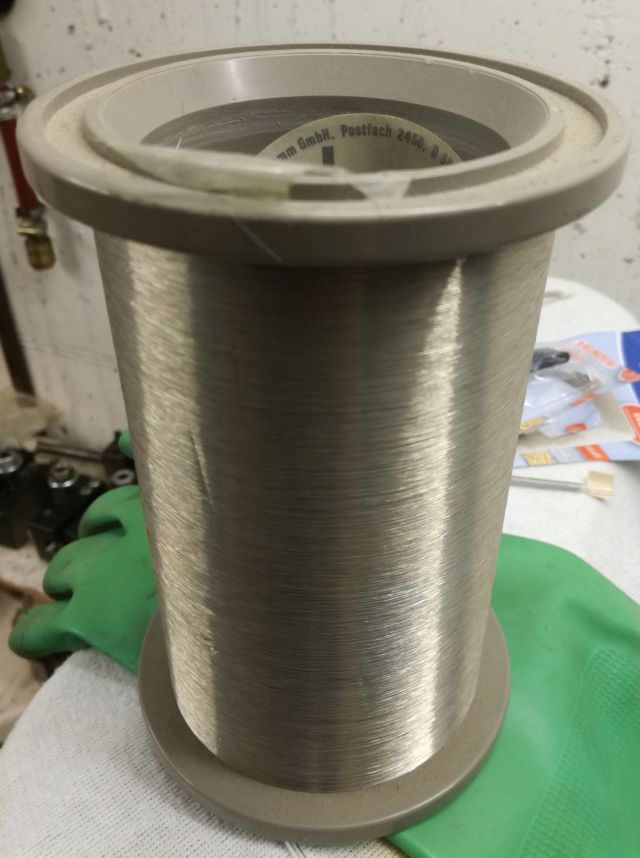

Some calculation quickly shows that a single layer or wire will be enough. Such wire will easily work with the measurement current.
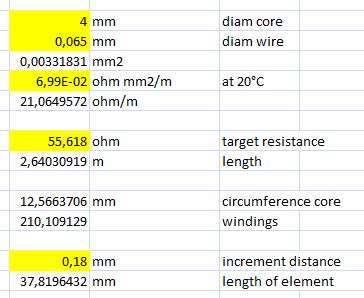
Winding of course needs to be done with a machine, at about 0.2 mm pitch, you can’t do this by hand.
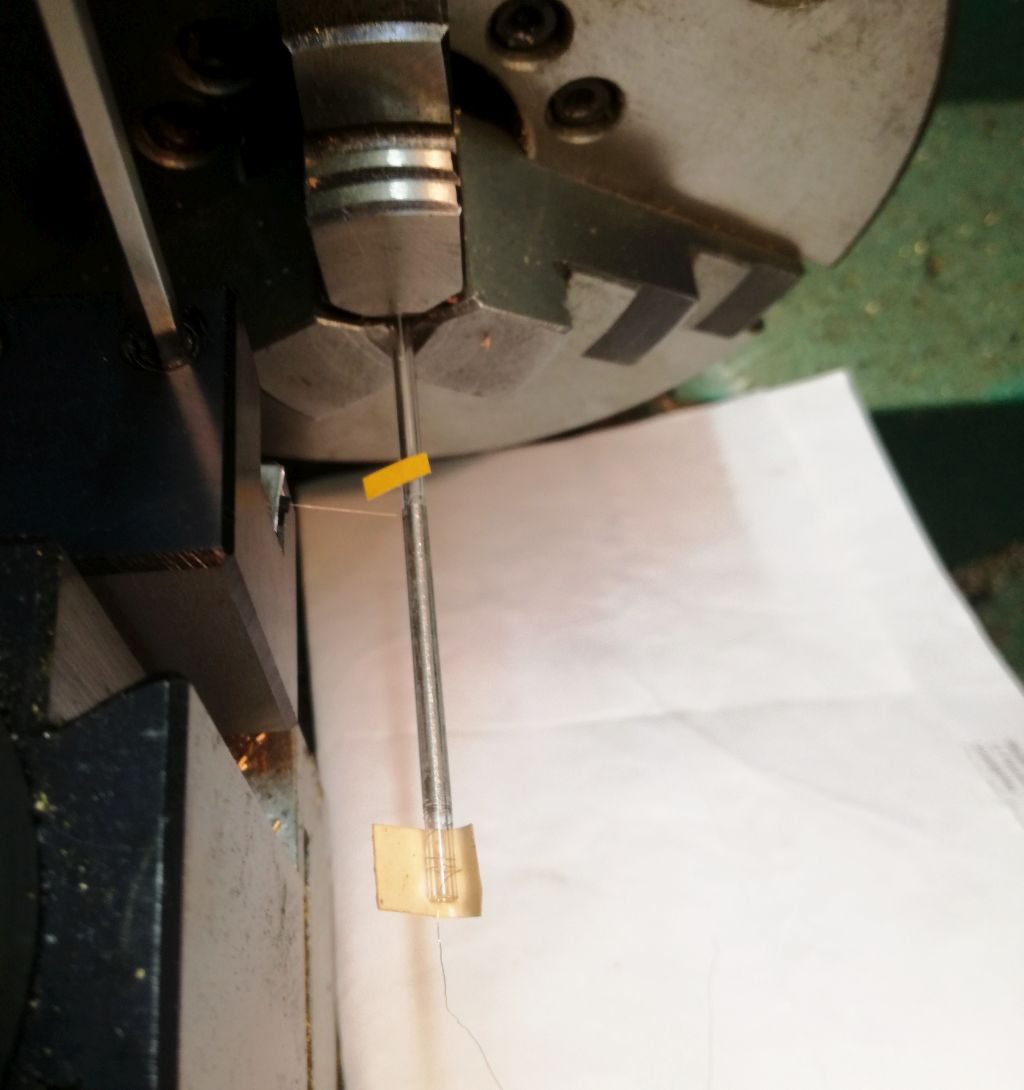
The elements were then measured to get the resistance corresponding to the workshop temperature, about 56 ohms, and fixed the wire in-place on the machine, with some super glue. Afterwards, the wire was further covered with high-quality epoxy, and fitted into a thin-walled aluminum cylinder, for added protection, and thermal equilibration.

The old sensor housing had still some stuff in it (the old Ni wire, and some stinky resin), and almost impossible to re-use the old mounting case for the sensor. Fortunately, we have a CNC lathe around, so quickly machined a new case as well.

A layer of Capton tape wound around the protected element, just in case of some leakage current developing over time.
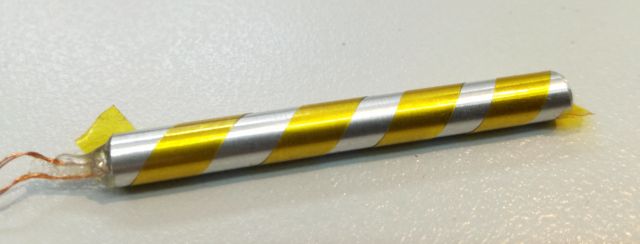
The element was then put in the mounting case with some silicon-base thermal compound.
Finally, the sensor completed, connected to the old, steel wire braided cable.
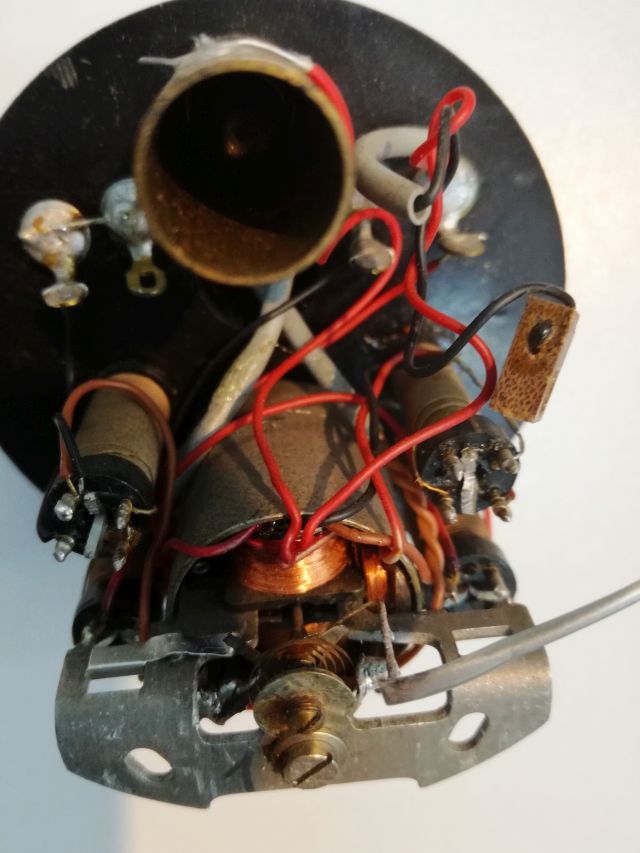
For test, a litte fixture was made, which can be heated up with a 4 ohms, “100 watt” resistor. Well, it easily gets up to 150 degrees C.

As you can see, all working pretty well!
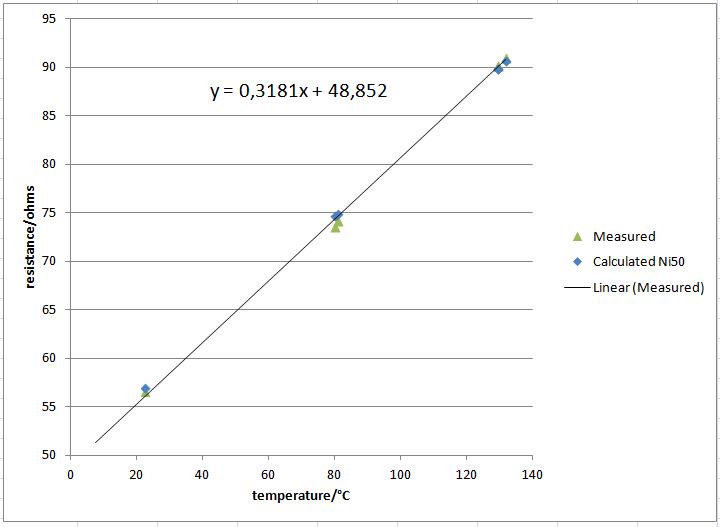
Some hours later, also the instrument fixed, dial and case sandblasted and painted, etc.

Working!!
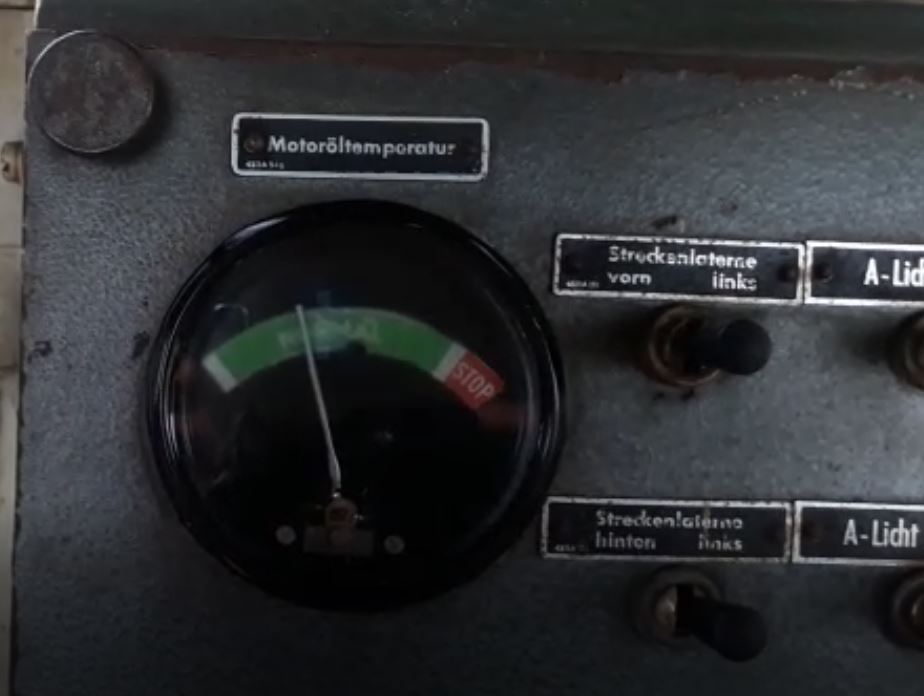
Field test!!


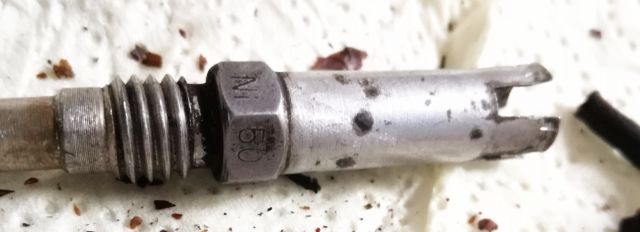
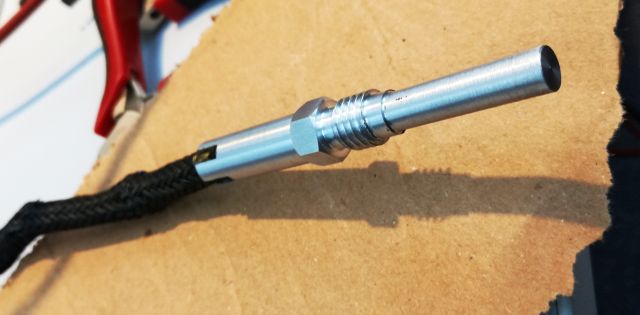
Simply incredible. I’ve read lots of repair stories on EEVBlog and other places like xDevs of very smart people going to great lengths to restore equipment, but this is an even higher level of ‘fit and finish’ work. Building a thermocouple from scratch and getting all of the qualities needed is fantastic. I repaired a Fluke 8010A last night by replacing a shorted 4.7 micro-Farad tantalum capacitor and the LM-723 precision regulator damaged by the failed capacitor. Tracking them down and seeing the meter come back to life felt pretty good. But it’s next to nothing compared to the things I’ve read in your blogs. I’ll keep at it, though.